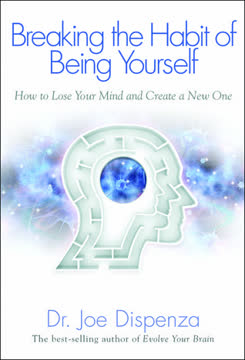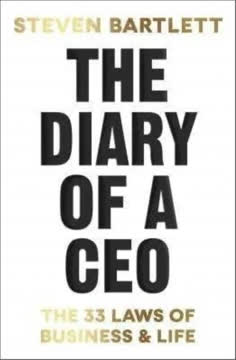つの重要なポイント
1. 心の力を活用してポジティブな変化を生み出す
何かについて良い気分になるか悪い気分になるかの方法は2つしかない。それは、過去に起こった良いことや悪いことを思い出すか、将来起こりうる良いことや悪いことを想像するかである。
心身のつながり。 内部の映像や音声としての思考は、私たちの感情や行動に直接影響を与える。これらの精神的プロセスを制御することで、感情状態を変え、最終的には人生の結果を変えることができる。
暗示の力。 人間の心は非常に暗示にかかりやすく、外部および内部の手がかりに反応する。自己対話や心のイメージを意識的に導くことで、潜在意識を成功と幸福に向けて再プログラムすることができる。
神経可塑性。 脳が新しい神経経路を形成する能力は、ポジティブな精神技術を一貫して実践することで、根深い思考パターンや行動を変えることができることを意味する。
2. 精神技術を通じてストレスを軽減し、平穏を創り出す
漸進的リラクゼーション... この技術を何度も練習することで、自分自身と人生の重要な部分を掌握することができる。
漸進的リラクゼーション。 この技術は、異なる筋肉群を体系的に緊張させたり緩めたりし、視覚化と組み合わせて深い身体的および精神的リラクゼーションを達成するものである。
ヘイブニング技法。 この心理感覚法は、特定のタッチパターン、眼球運動、視覚化を使用してストレスやネガティブな感情を迅速に軽減することができる。以下の効果が示されている:
- 体内のストレス化学物質を減少させる
- リラクゼーションと平穏の状態を生み出す
- 脳内の神経経路を変える
感情の再調整。 アペックス技法は、挑戦的な感情を全体的な感情知能に再統合し、これらの感情の保護機能を維持しながらも圧倒されないようにする。
3. 内部対話と姿勢を変えて自信を高める
自信とは「自分の肌に快適であること – 本物で自然であること」である。
内部対話。 自己対話は自信レベルに大きな影響を与える。内部の声のトーン、ボリューム、内容をよりポジティブで支援的なものに意識的に変えることで、自信を高めることができる。
パワーポーズ。 エイミー・カディの研究によれば、特定の体の姿勢を2分間取るだけで:
- 力と自信の感覚を高める
- コルチゾール(ストレスホルモン)レベルを下げる
- テストステロン(自信ホルモン)レベルを上げる
視覚化。 自分をより自信のある姿として想像したり、ロールモデルから自信を借りることで、心を再プログラムしてより自信を持つことができる。この技術は、脳が鮮明に想像された経験と現実の経験を区別できないことを利用している。
4. 柔軟性と創造的な問題解決を通じてレジリエンスを構築する
レジリエンスとは、創造的に考える能力と持続力の組み合わせである。
柔軟性。 必要な多様性の法則は、最も行動の柔軟性を持つ人がどのシステムでも最もコントロールを持つことを示している。挑戦に対する複数のアプローチを開発することで、レジリエンスが向上する。
創造的な問題解決。 問題解決の質問のような技術は、視点を変え、新しい解決策を生み出すのに役立つ:
- 問題の中のポジティブな点を特定する
- 望む結果を明確にする
- 取るべき行動や止めるべき行動を考える
- 必要なタスクに動機を見つける
- すぐに行動を起こす
ロールモデルの視点。 成功した問題解決者があなたの挑戦にどのようにアプローチするかを想像することで、新しい洞察や戦略を得ることができる。
5. コアバリューに沿った目標を設定して本物の動機を得る
幸福が私たちの生活の背景でない限り、人生は常に上り坂の苦労である。
コアバリューの特定。 本当に重要なことを発見することで、意味のある目標を設定し、持続的な幸福を見つける基盤を提供する。このプロセスには以下が含まれる:
- 人生で最も重要なことを特定する
- 「なぜ」を問いかけて根底にある価値を明らかにする
- 表面的な欲望と深い動機を区別する
価値駆動の生活。 日々の行動をコアバリューに合わせることで、一時的な快楽や外部の承認を追い求めるのではなく、目的意識と持続的な動機を生み出す。
バランスと全体的な成功。 目標を設定する際に、健康、人間関係、キャリア、精神性などの複数の生活領域を考慮することで、個人の成長と充実に対するバランスの取れたアプローチを確保する。
6. 内部の葛藤を解決して自己妨害を克服する
目標に向かいたいという欲望がある一方で、失敗を恐れるとき、内部の葛藤が生じる。
内部葛藤の認識。 自己妨害は、異なるポジティブな意図を持つ内部の「部分」の葛藤から生じることが多い。これらの部分を特定することが解決の第一歩である。
部分の統合。 「自己妨害を止める簡単な方法」技法は以下を含む:
- 葛藤する信念や立場を特定する
- 各部分のポジティブな意図を認識する
- 部分間の共通点を見つける
- 部分を統合して一致した行動を取る
一致した行動。 内部の葛藤が解決されると、内部の闘争に費やされていたエネルギーを目標達成や潜在能力の実現に向けることができる。
7. 視覚化と意思決定を通じて魅力的な未来を創り出す
「この世で最も重要なことは、私たちがどこに立っているかではなく、どの方向に進んでいるかである。」 - ゲーテ
未来の視覚化。 「今すぐ未来を創り出す」技法は以下を含む:
- 1年先の成功した未来を想像する
- 3ヶ月ごとのマイルストーンイメージを作成する
- 現在の行動を未来の結果に結びつける
計算されたリスクテイク。 決定のアップサイドとダウンサイドを1-10のスケールで評価することで、より情報に基づいた選択を行い、無謀なリスクを避けることができる。
固定された目標よりも方向性。 価値観に導かれた明確な方向性を持ち、柔軟な目標を設定することで、適応しながらも目的意識と進歩感を維持することができる。
8. ポジティブな思考と感謝の気持ちで運を増やす
自分が運が良いと信じている人は、運が悪いと信じている人よりも運が良い。
運のマインドセット。 科学的研究は、運が私たちの信念や認識に影響されることを示唆している。「運が良い」と感じるマインドセットを育むことで、ポジティブな機会や結果を増やすことができる。
運の増幅技法。 この視覚化エクササイズは以下を含む:
- 運が良いと感じた時や物事がうまくいった時を思い出す
- それに関連するポジティブな感情や感覚を増幅する
- この「運のエネルギー」をさまざまな生活領域に広げる
日々の感謝の実践。 感謝日記をつけることは:
- 人生のポジティブな側面を強化する
- 脳を訓練して良い経験を探し出し、焦点を当てる
- 基本的な気分と全体的な生活満足度を高める
- 困難な時期にポジティブな源を提供する
最終更新日:
FAQ
What's "Positivity: Confidence, Resilience, Motivation" about?
- Comprehensive System: The book by Paul McKenna is a guide to developing positivity through confidence, resilience, and motivation. It combines reading with audio sessions for a holistic approach.
- Transformative Techniques: It offers psychological techniques and guided hypnosis to help readers achieve lasting change by tapping into their unconscious mind.
- Structured Approach: The content is divided into sections focusing on reducing stress, building confidence, enhancing resilience, and boosting motivation.
- Practical Exercises: The book includes exercises and thought experiments designed to help readers reframe their mindset and improve their emotional intelligence.
Why should I read "Positivity: Confidence, Resilience, Motivation"?
- Life-Changing Potential: The book promises to positively change your life by providing tools to enhance your mental and emotional well-being.
- Dual Approach: It combines reading with audio hypnosis sessions, offering a unique, immersive experience that mimics personal coaching.
- Proven Techniques: The methods are based on years of research and practice, tested on thousands of people, ensuring their effectiveness.
- Holistic Benefits: It addresses various aspects of life, from stress reduction to motivation, making it a comprehensive guide for personal development.
What are the key takeaways of "Positivity: Confidence, Resilience, Motivation"?
- Mindset Shift: The book emphasizes the power of suggestion and how changing your internal dialogue can transform your life.
- Emotional Control: Techniques like the Havening and Apex methods help manage stress and recalibrate emotions.
- Confidence Building: Exercises are provided to boost self-belief and confidence, essential for personal and professional success.
- Goal Setting: It encourages aligning goals with core values to ensure a fulfilling and purpose-driven life.
How does Paul McKenna define "Positivity" in the book?
- Mindset and Behavior: Positivity is described as a mindset and way of behaving that involves confidence, resilience, and motivation.
- Not Constant Happiness: It doesn't mean being happy all the time but having a default setting of positive emotions.
- Emotional Balance: Positivity allows for natural emotional responses to negative events but prevents living in fear or sadness.
- Transformative Power: By embracing positivity, every aspect of life, from work to relationships, can be improved.
What is the "Havening Technique" mentioned in the book?
- Psycho-Sensory Method: Havening is a psycho-sensory technique involving touch, eye movements, and visualization to reduce stress and trauma.
- Rapid Results: It produces quick and significant changes in emotional states by altering brain chemistry and neural pathways.
- Scientific Backing: Developed by Dr. Ronald Ruden, it is used by military and emergency services for its effectiveness.
- Practical Application: The book provides a step-by-step guide to practicing Havening for personal stress management.
How does the book suggest building resilience?
- Flexibility and Adaptability: Resilience is not just about toughness but also about being adaptable and creative in problem-solving.
- Law of Requisite Variety: The book explains that the most flexible person in a system will control it, emphasizing the need for behavioral flexibility.
- Problem-Solving Techniques: It offers questions and exercises to shift perspectives and generate creative solutions to challenges.
- Role Model Strategy: Readers are encouraged to adopt the mindset of successful problem-solvers to enhance their resilience.
What are the best quotes from "Positivity: Confidence, Resilience, Motivation" and what do they mean?
- Albert Einstein Quote: "Everything should be made as simple as possible, but no simpler." This emphasizes the book's approach to simplifying complex psychological techniques for practical use.
- Mark Twain Quote: "I’ve lived through some terrible things in my life – some of which actually happened." This highlights the concept of catastrophizing and the importance of focusing on reality.
- Goethe Quote: "The greatest thing in this world is not so much where we stand as in what direction we are moving." It underscores the importance of having a clear direction and purpose in life.
- Bob Marley Quote: "Some people are so poor all they have is money." This reflects the book's message about the importance of aligning goals with core values for true fulfillment.
How does the book address self-sabotage?
- Internal Conflict Resolution: The book provides a technique to align conflicting parts of the self that may lead to self-sabotage.
- Positive Intentions: It encourages understanding the positive intentions behind conflicting desires to integrate them harmoniously.
- Practical Exercise: A step-by-step method is offered to resolve internal conflicts and focus on unified goals.
- Empowerment: By resolving self-sabotage, readers can move forward with confidence and clarity in their pursuits.
What is the "Negative Thought Fast" and how does it work?
- Mind Rewiring: The Negative Thought Fast is a process to rewire the brain by starving it of negative thoughts.
- Awareness and Action: It involves recognizing negative thoughts, understanding their messages, and taking action to address them.
- Positive Reprogramming: The technique encourages replacing negative imagery with positive outcomes to change emotional responses.
- Habit Formation: By consistently practicing this fast, readers can develop a habit of focusing on positive thoughts and feelings.
How does the book suggest using "Power Poses" for confidence?
- Physiological Influence: Power poses are physical stances that influence mental and emotional states, boosting confidence.
- Scientific Validation: Research by Amy Cuddy shows that power poses can alter hormone levels, increasing confidence and reducing stress.
- Practical Application: The book describes specific poses like "Wonder Woman" and "Winner" to practice before important events.
- Behavioral Impact: Regular use of power poses can lead to more assertive and confident behavior in various situations.
What role do "Core Values" play in goal setting according to the book?
- Foundation for Goals: Core values are the underlying principles that should guide goal setting to ensure alignment with personal fulfillment.
- Clarity and Direction: Identifying core values helps clarify what truly matters, preventing pursuit of goals that don't resonate personally.
- Value-Driven Life: Living in accordance with core values leads to genuine happiness and satisfaction, beyond material achievements.
- Practical Exercise: The book provides a method to identify and prioritize core values before setting goals.
How does the book propose increasing one's luck?
- Mindset Shift: The book suggests that believing in one's luck can actually increase it, supported by scientific research.
- Visualization Technique: A visualization exercise is provided to recall and amplify feelings of luck, spreading this energy to all life areas.
- Positive Reinforcement: By focusing on past lucky experiences, readers can enhance their perception of being lucky.
- Daily Practice: Regular practice of the luck exercise can lead to noticeable improvements in opportunities and outcomes.
レビュー
本書『ポジティビティ』は、主に肯定的な評価を受けており、読者は自信とモチベーションを高めるための実践的なエクササイズや音声ダウンロードを称賛している。多くの人々が、パンデミック後の生活に対応した最新の内容を評価し、使いやすく役立つと感じている。一部の批評家は、内容が浅薄であるとか、マッケナの以前の作品と重複していると指摘する。読者はその短い長さと、技術を再訪できる点を高く評価している。大多数の人々は、心の持ち方を改善し、ストレスに対処するために効果的だと感じているが、少数の懐疑的な読者はその深さや科学的根拠に疑問を呈している。全体として、本書はポジティビティを高めるための迅速でアクセスしやすいガイドとして見られている。
Similar Books










![I CAN MAKE YOU RICH (BOOK AND CD) [Hardcover] Summary](https://images.sobrief.com/social/cover_i-can-make-you-rich_360px_1747144112.jpg)





